#4, Par 4, 393m
This hole turns back to the East. Over the brow of a small rise a few dozen metres beyond the tee, a deceptively wide fairway awaits.
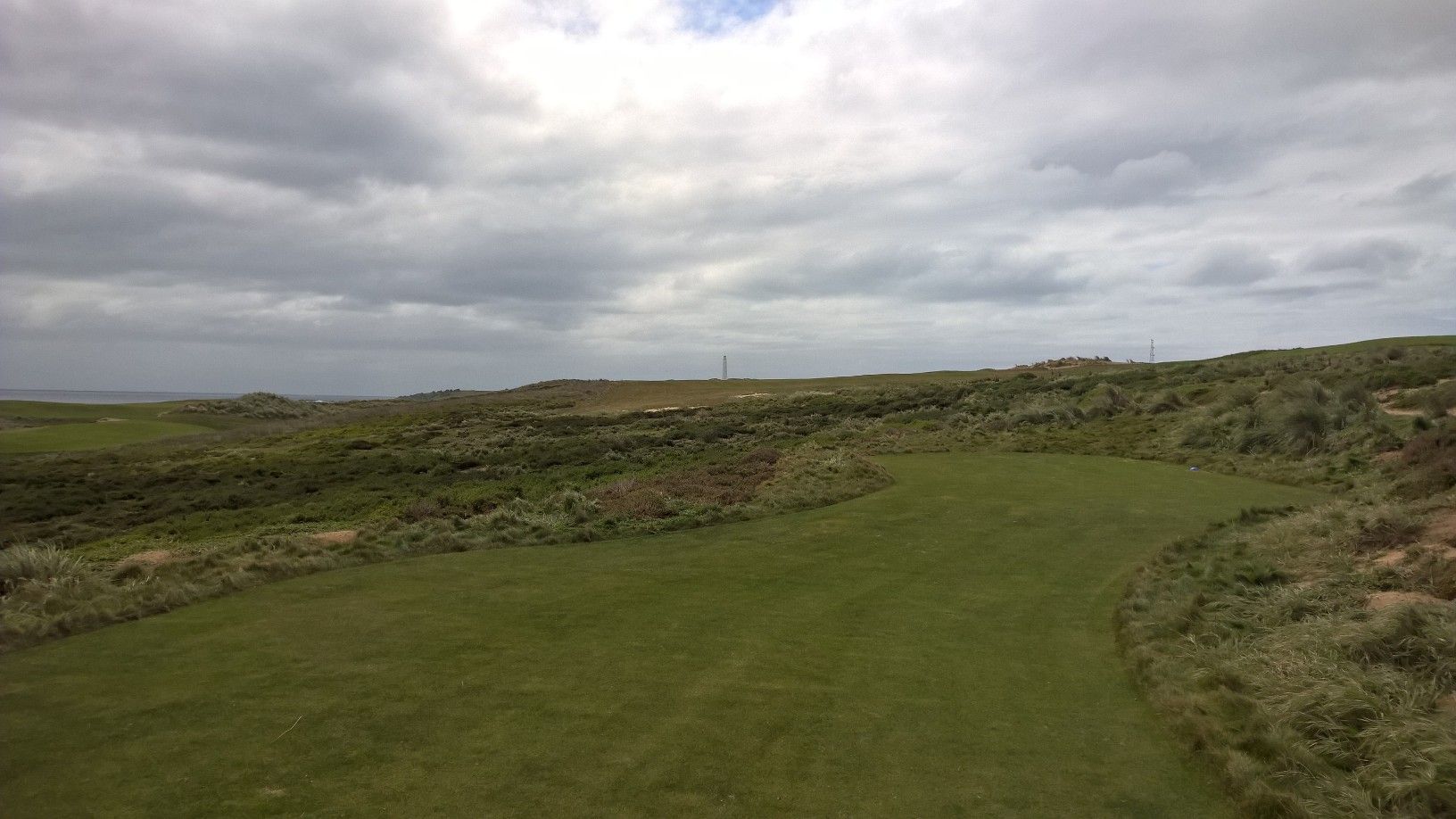
The green is unbunkered, but a pair of hazard lay at the right of the fairway, several dozen metres short of the green front. The green is another delight, at fairway grade, gently sloping from front to back. It is best sighted from the left edge of the fairway, but will only be fully visualised after very long tee shots. The combination of green complex, and the hazard short of the putting surface will create an interesting depth perception dilemma for many on approach.
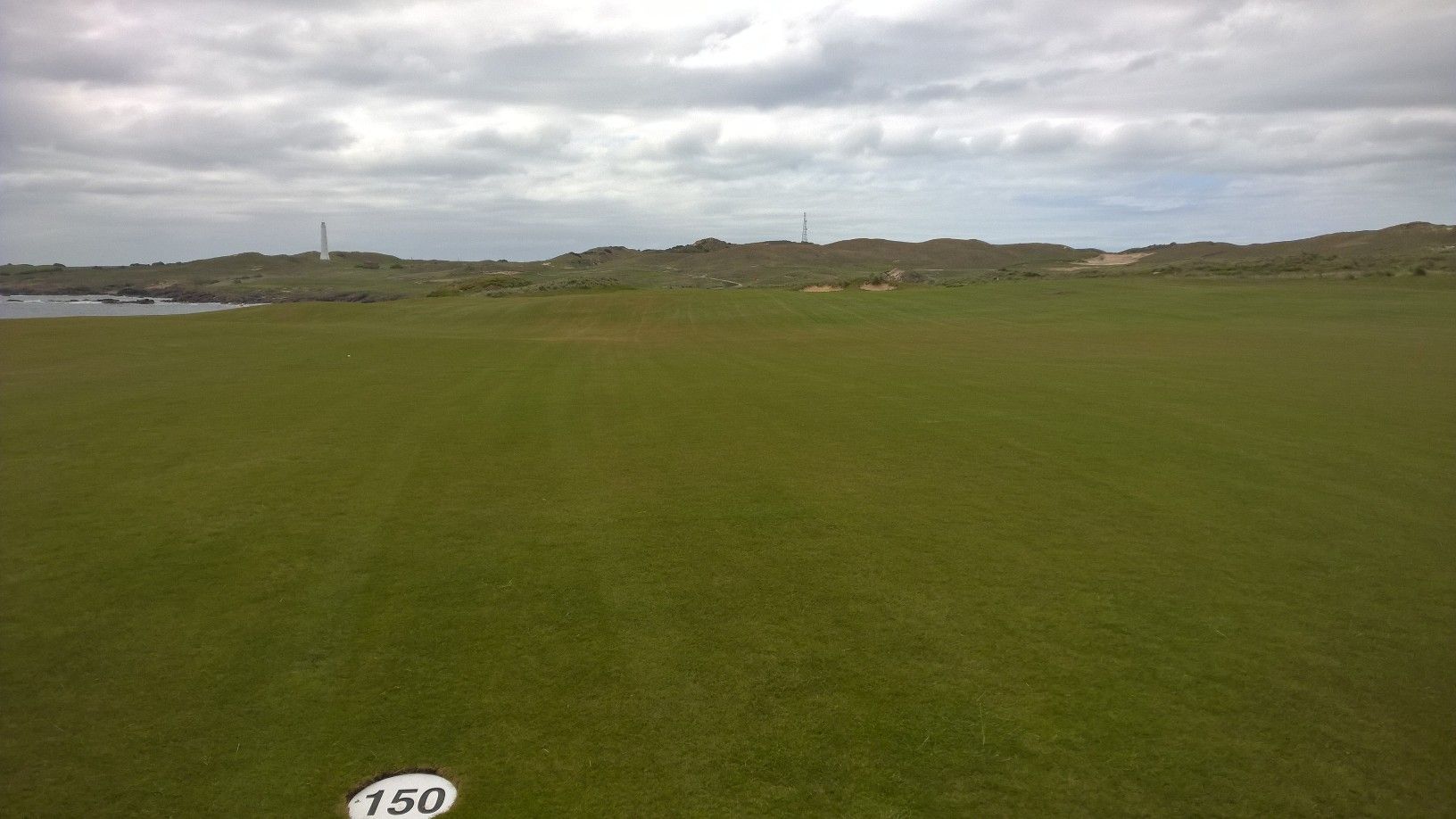
A wonderful hole, with high playability, interest, and a fantastic green.
#5, Par 4, 329m
Running parallel to the previous hole, but playing in the opposite direction. I like to see this feature to a routing, albeit employed sparingly. If the wind aided play on the fourth, it will likely complicate play on the fifth and vice versa. Drive bunkering on the fifth sits at the left edge of the fairway, and the fairway is more than wide enough. The presence of a little knee high native grass between tee and fairway will however intimidate some a little.
View of the fifth approach from the left fairway edge

The view of the green on approach, with the sea creating a striking backdrop, is another instance where the designers allow the site to speak for itself. No fussy construction, or complicated green design. Another open green front, at fairway grade, allowing one to hit a low running approach to the flag should the conditions demand, or the golfer desire such a play. The fifth green is smaller than all those played before it, so the approach best be accurate.
#6, Par 5, 447m
The broad fairway of the par five sixth hole, with bunkers on the right of the drive landing zone, and acres of fairway left, shared with the nearby thirteenth hole

Very reachable in two with a good drive and favourable winds, particularly if the drive nears right side fairway bunkering. Tee shots played safely away from the bunker, towards the spacious fairway on the left, render the sixth a three shot proposition.
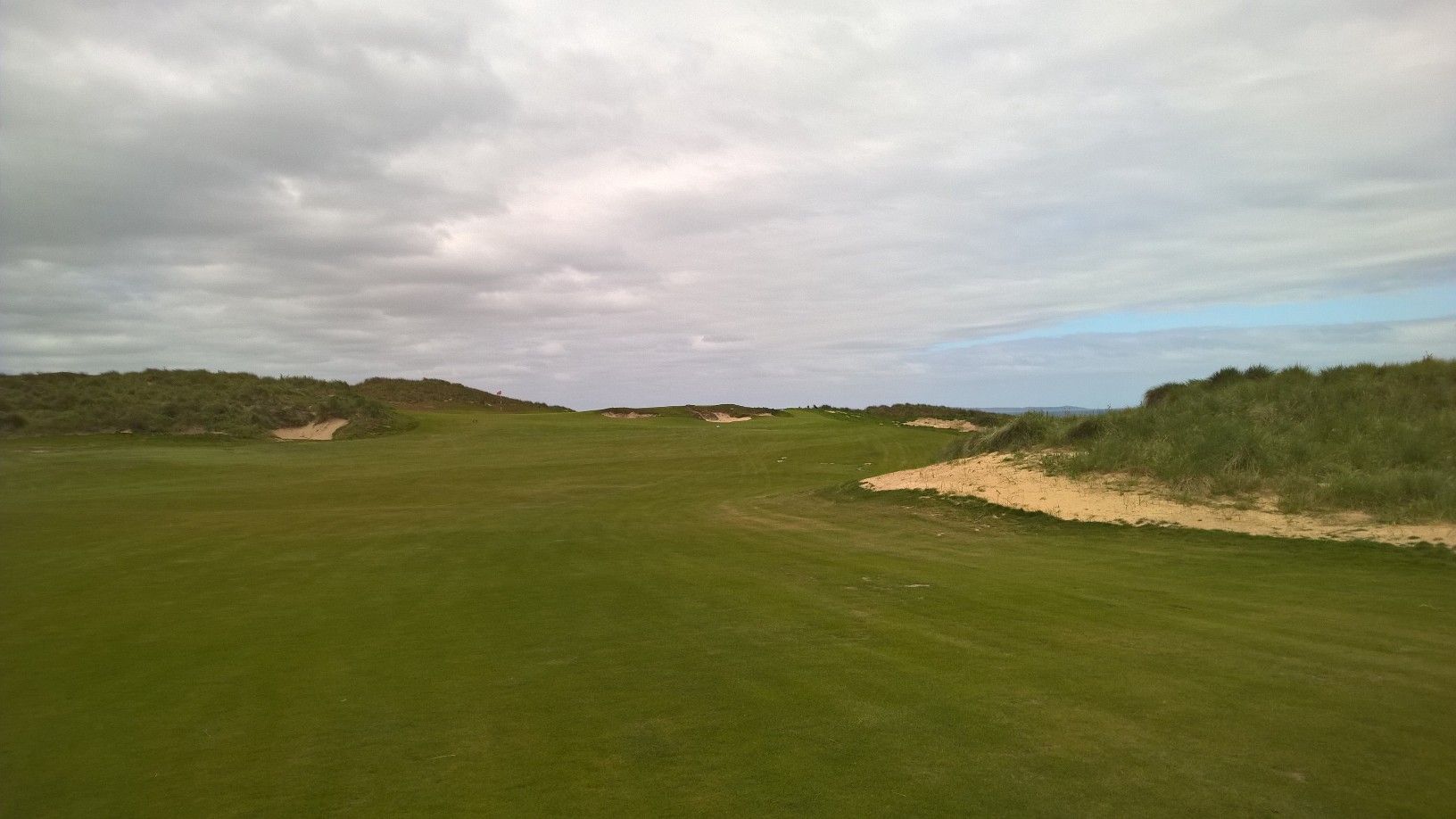
The sixth green is beautifully sited, nestled into the side of a dune, and sitting modestly above the fairway. The green is large and boasts a lot more internal contour than any of the greens on previous holes. It may look a little more at home on National Moonah, but works really well, and ensures a wealth of pin positions as well as interesting putting and chipping. In particular, putting from one portion of green to another rewards imagination and creativity.
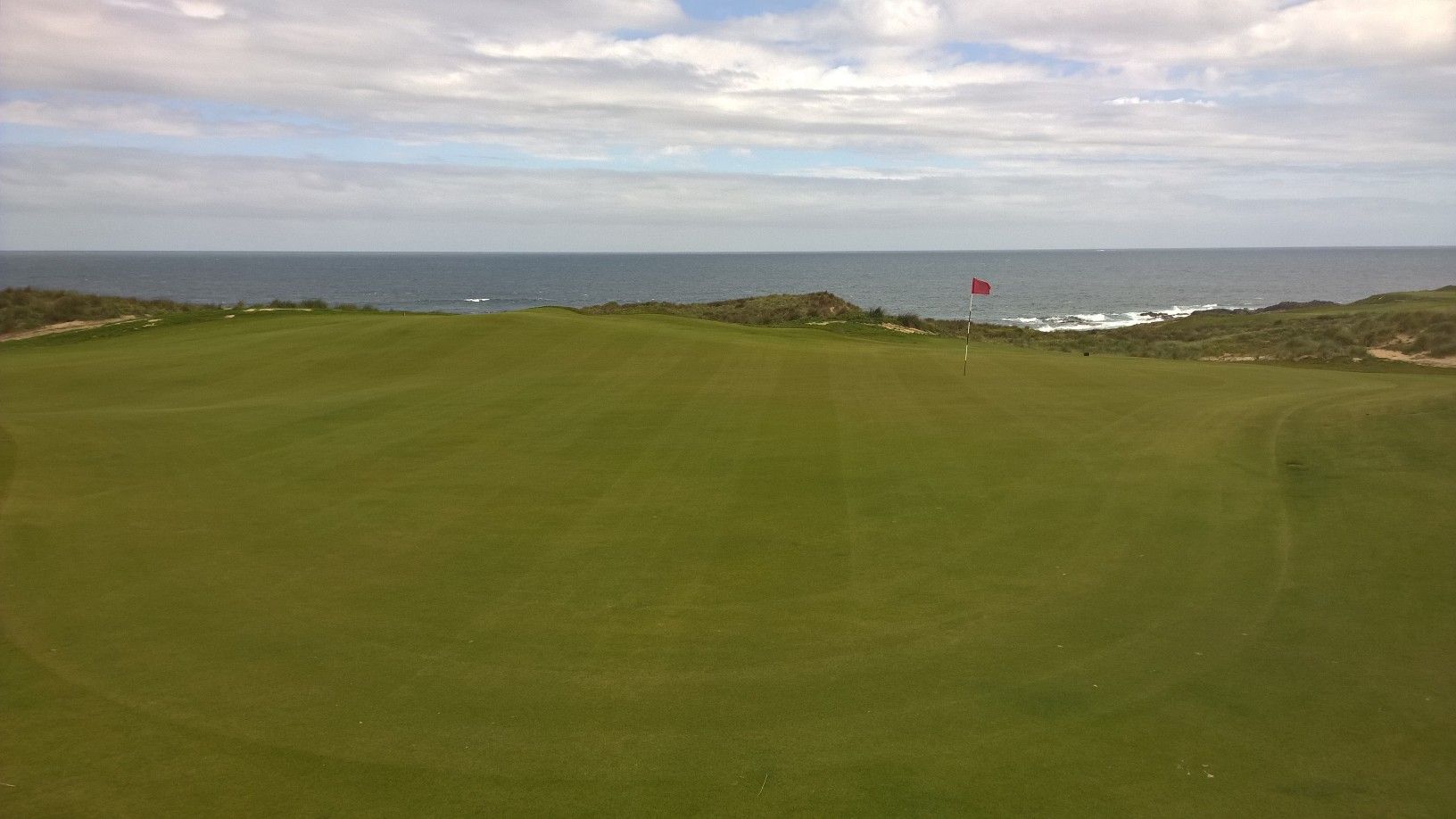
Great fun and challenge, the sixth is elastic and enjoyable, continuing the run of quality golf away from the more dramatic and scenic portions of the property.
#7, Par 3, 137m
Playing due East across a diagonal valley, this hole will sometimes be played with a lofted club, with the ball propelled by a strong wind at the player’s back. It may just as frequently see cross winds at play, or have a gale blowing into the player’s face, necessitating a long club with low ball flight. The wide green complex features a large knob front left, which depending on conditions, pin position and a player’s creativity, can be used in all manner of ways.
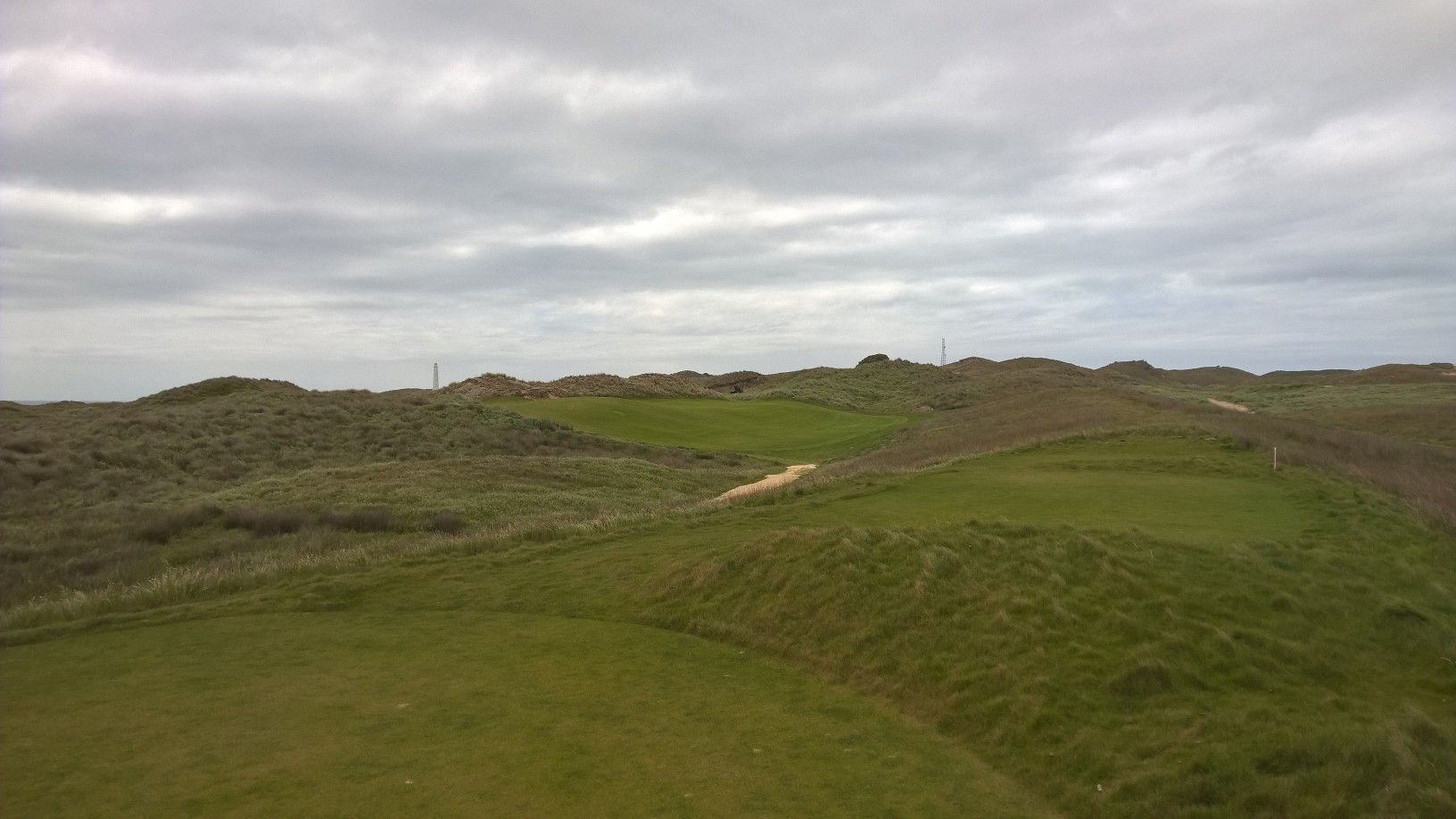
Those taking dead aim at a right side pin and coming up short will play a second from a deep swale well below the level of the putting surface.
Side view of the seventh green
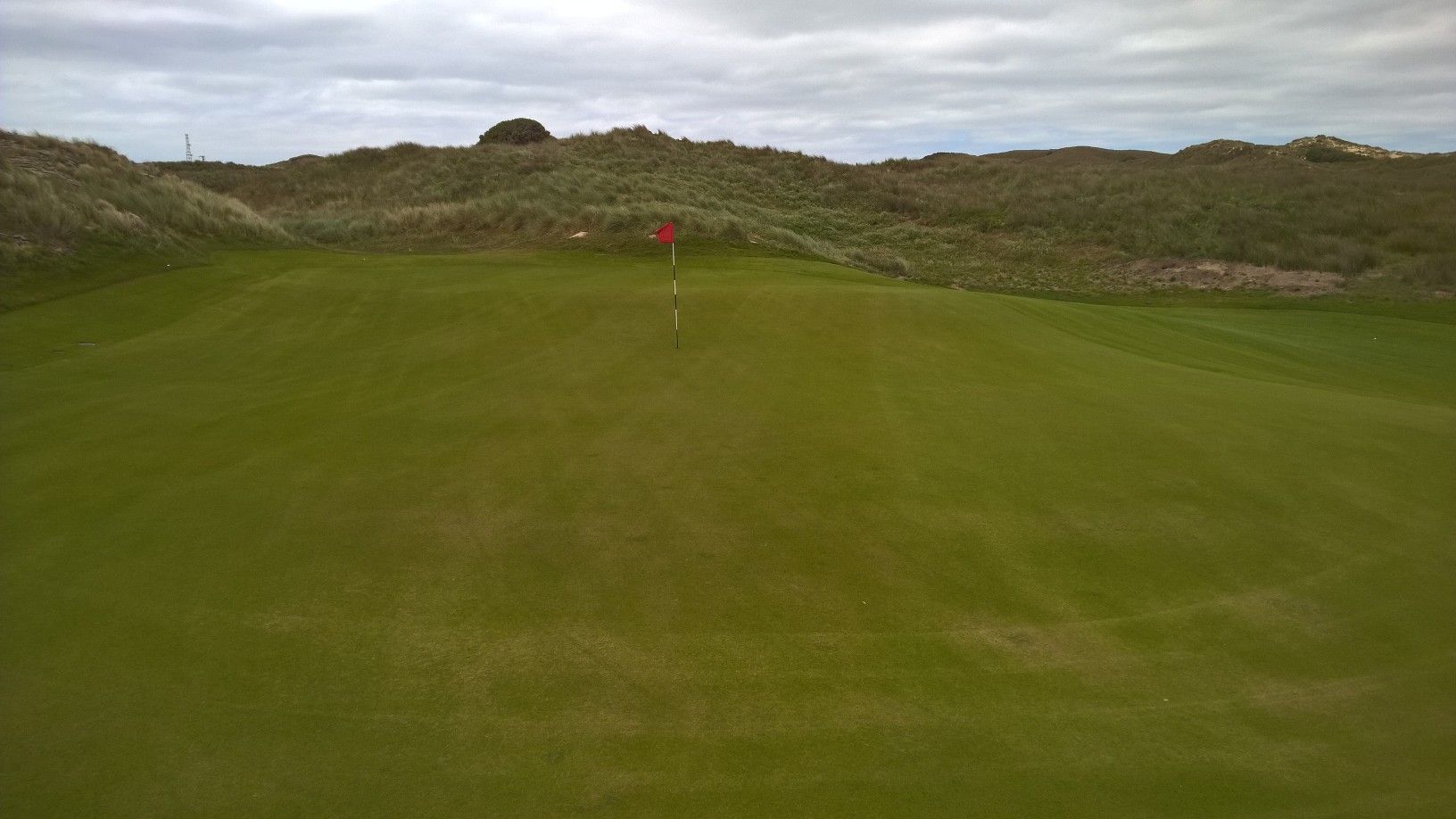
And a close look at the hazard beyond the left half of the putting surface – over-club at your peril!
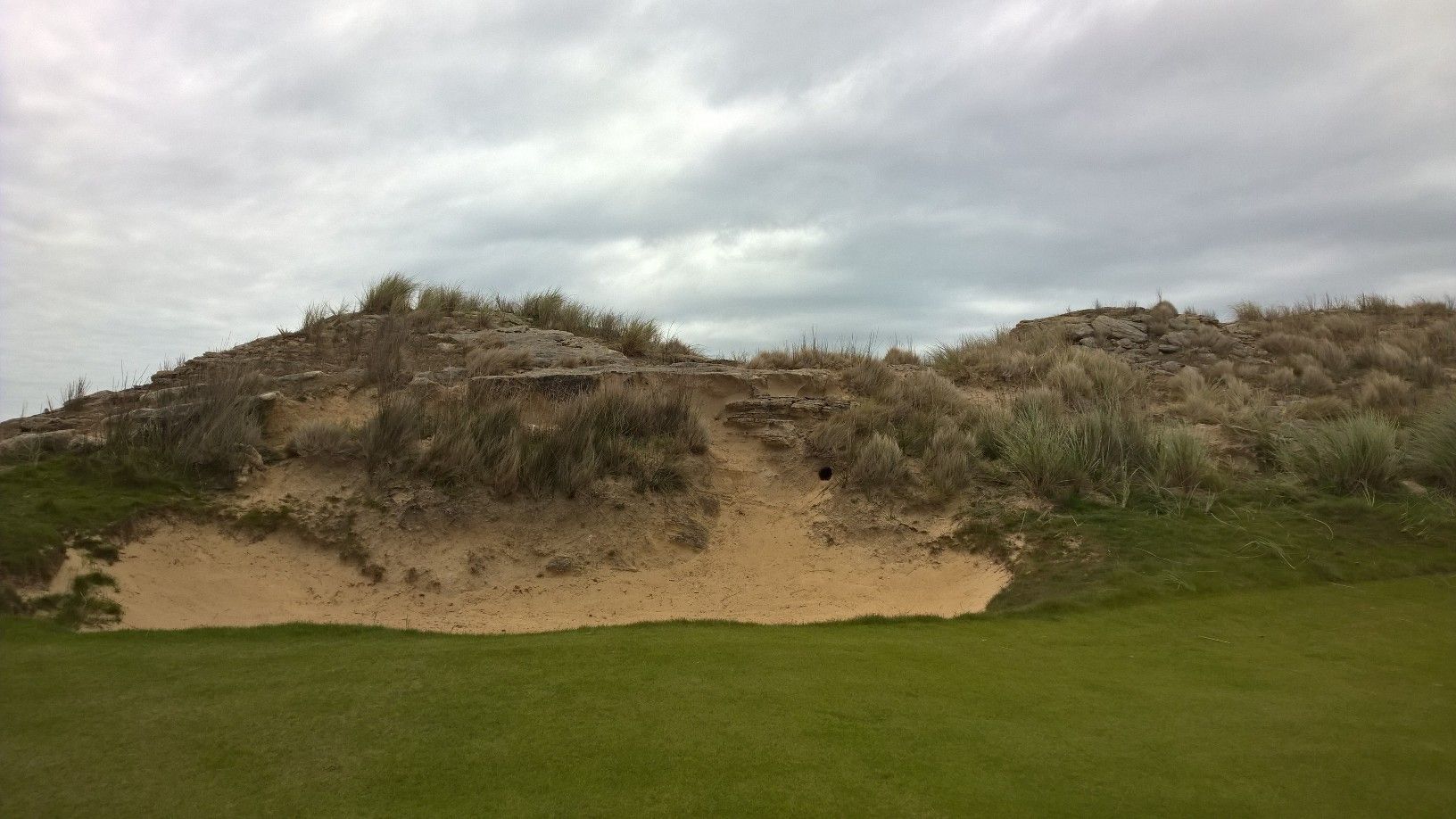
#8, Par 4, 384m
Imposing in appearance from the back tee – the eighth fairway is wide and the challenge less intimidating than it first seems. Moving forward a set of tees shortens the hole by dozens of metres, and allows greater visualisation of the unbunkered fairway.
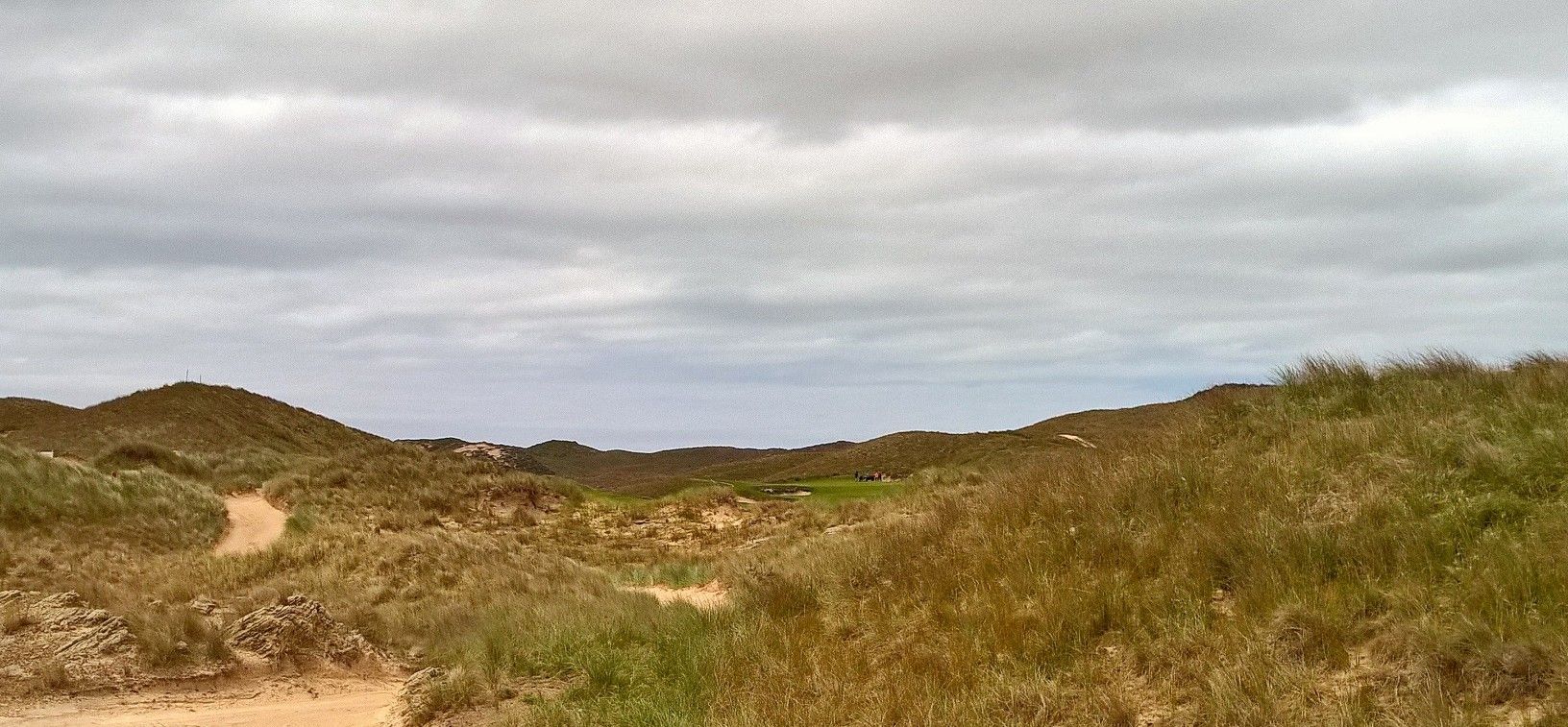
The eight green sits above the level of the fairway, and is one of few uphill approach shots encountered during the round. Given the left greenside bunkering, an approach from the right half of the fairway that finds the front right quadrant of the green seems a good play. A drawing approach shot that runs a little after landing will often result in a reasonably short putt, feeding on to the left and rear of the green – points I anticipate are frequent hole locations.
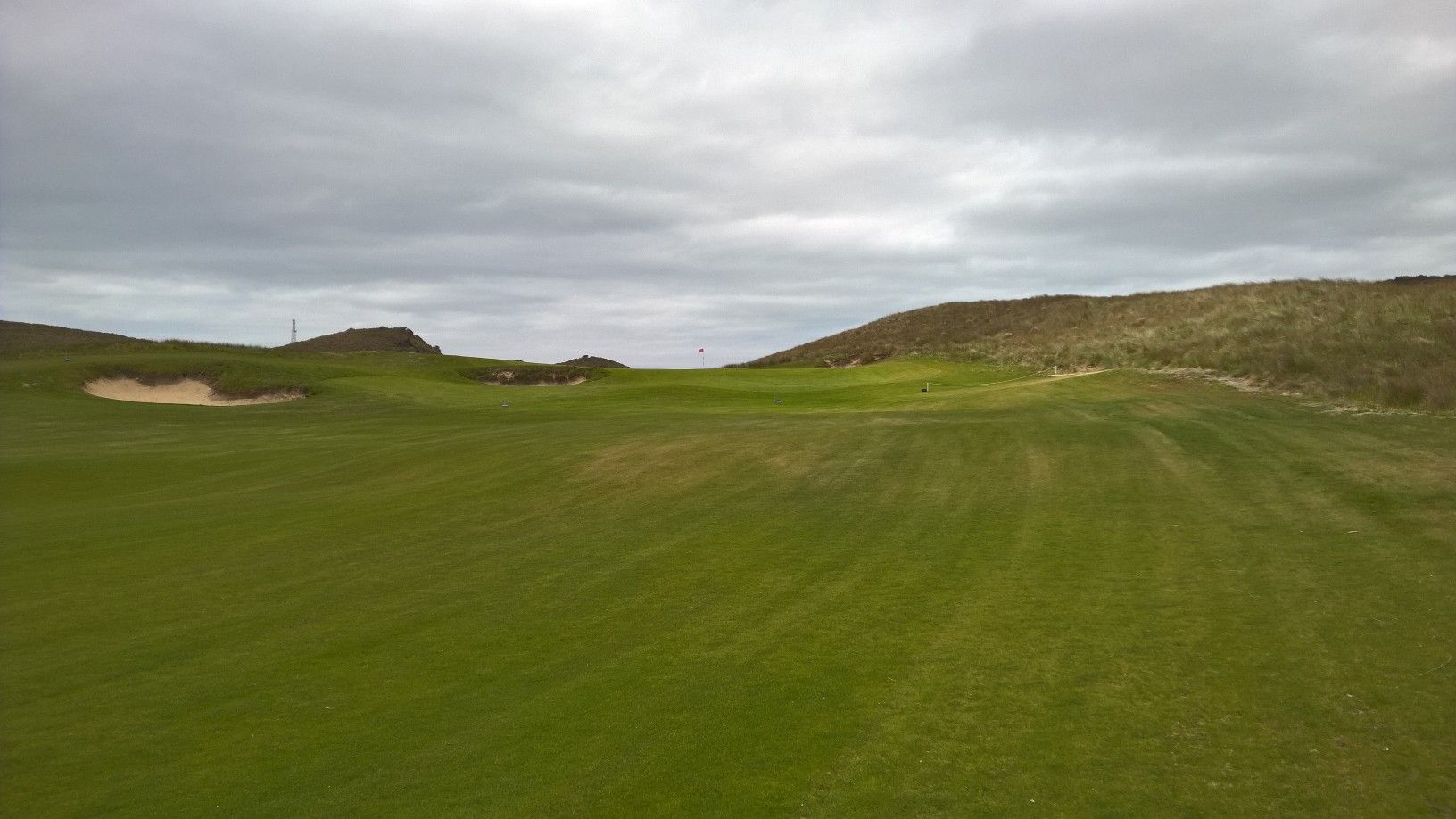
#9, Par 5, 488m
A hole which divided opinion, and stimulated much discussion among the group with whom I travelled to Cape Wickham. Then a fortnight later we read this on golfclubatlas.com from the erudite and exceptionally well-travelled, World Top 100 playing Bill Schulz.
“The downhill risk/reward par 5 9th hole with the creative/fascinating shotmaking mound (native grasses & a bunker) to the right of the greensite with the ocean as the backdrop is perhaps the greatest par 5 in the world along with the 13th hole at Augusta National.”
With an ocean backdrop, the ninth lays on tumbling terrain and descends steadily towards a natural greensite, with one or two turns along the way. From the tee the extent of fairway width and the gradient of the driver landing zone are not fully appreciated.
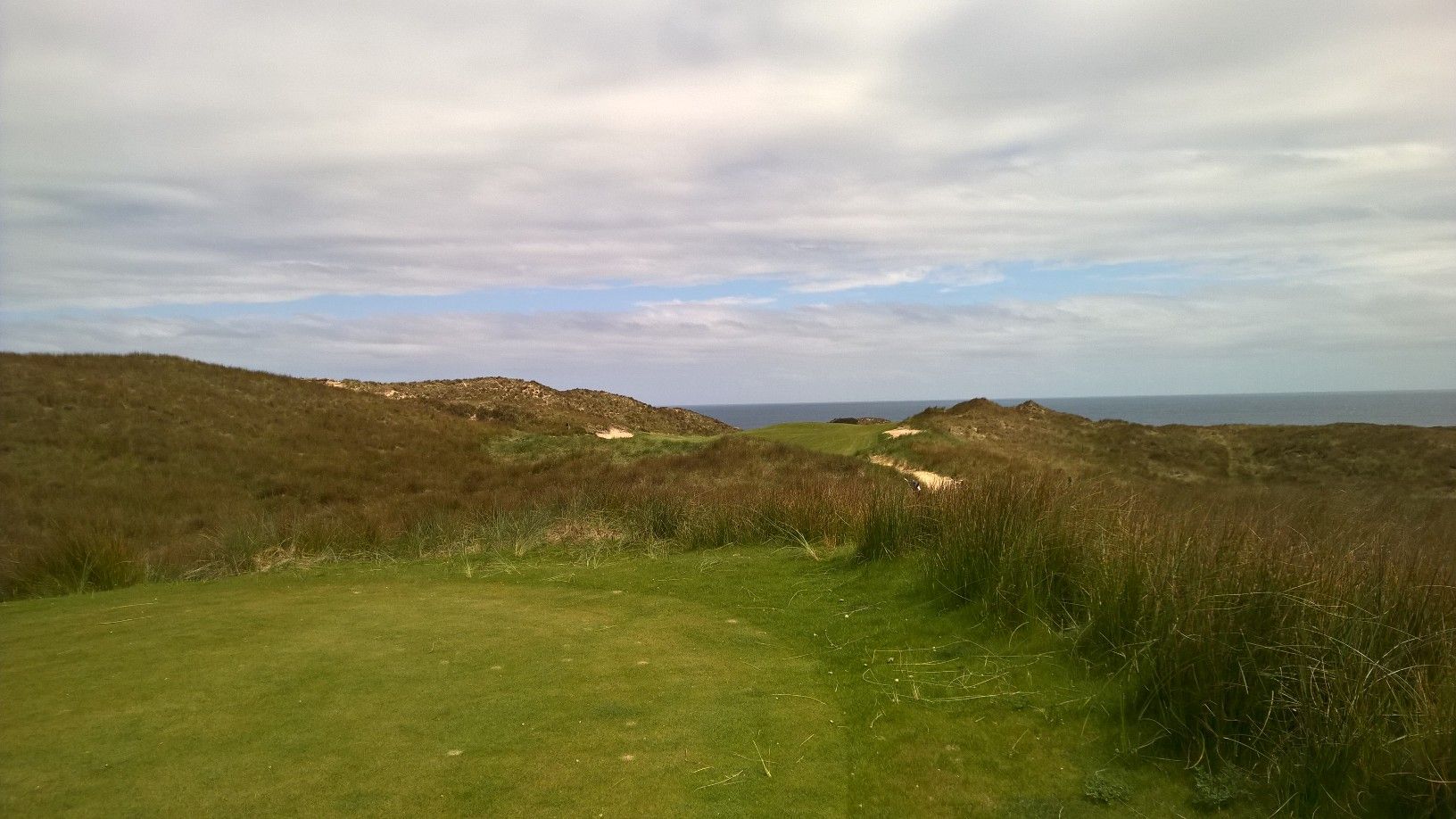
A strong drive played near the right side fairway bunkering presents an interesting dilemma. Should one fire a long second at the green, with the chance of securing an eagle putt? Is the lay-up a smarter option? If so, where to lay up? The marram covered due to the left of the green, and the broken ground short left of the green caution the man aiming for the flag with his second shot. So too the rough covered hillock front right of the green.
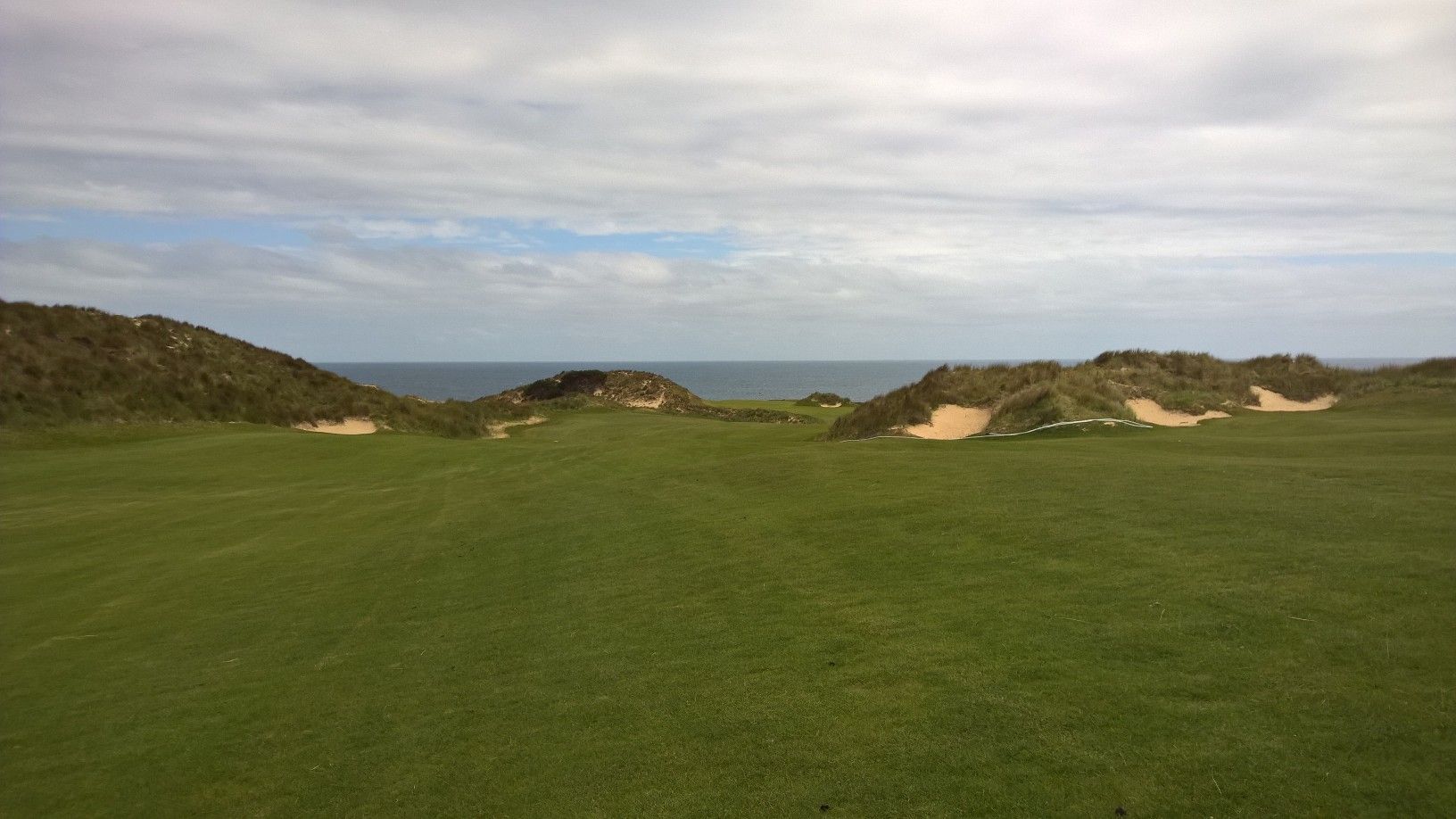
For those who have elected to lay-up, the short third shot looks like this

Once at the green, players realise the extent of the steep fall aways at the right and rear of the ninth green, which further heighten the requirement for accuracy on approach.
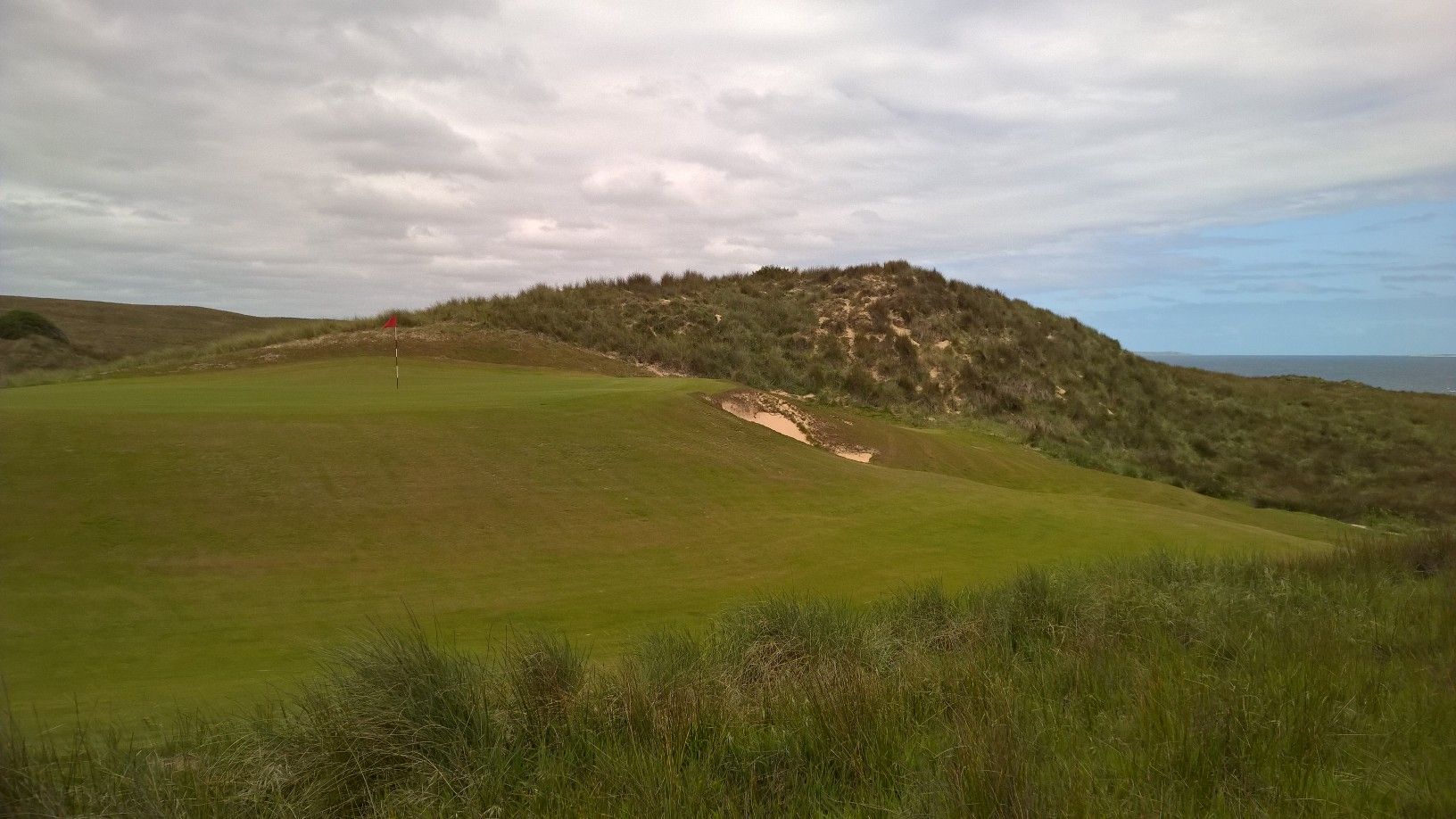
The green contouring itself is again artful and in the case of the ninth, likely to be overshadowed by the other design elements of the hole. The ninth at Cape Wickham is indeed one with the lot, and a unique exciting hole. Whether it is the peer of Augusta National’s famous 13
th however, I’m not quite sure…